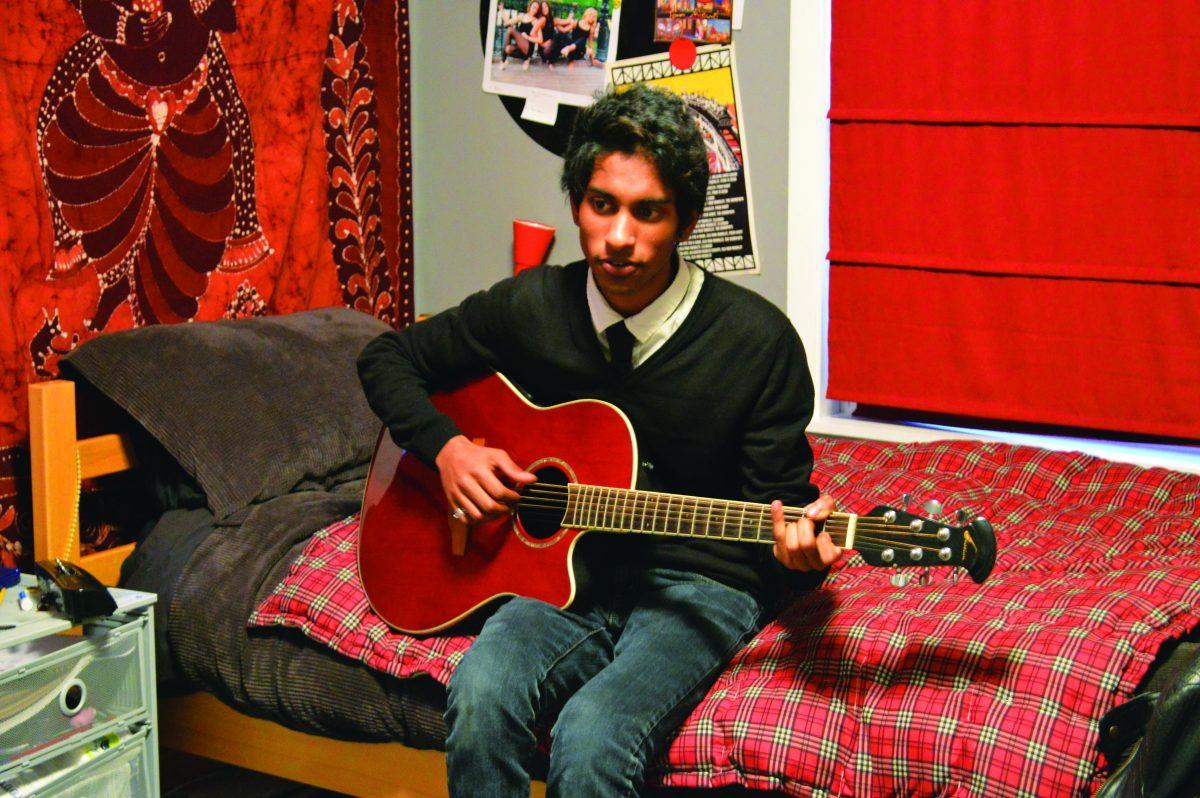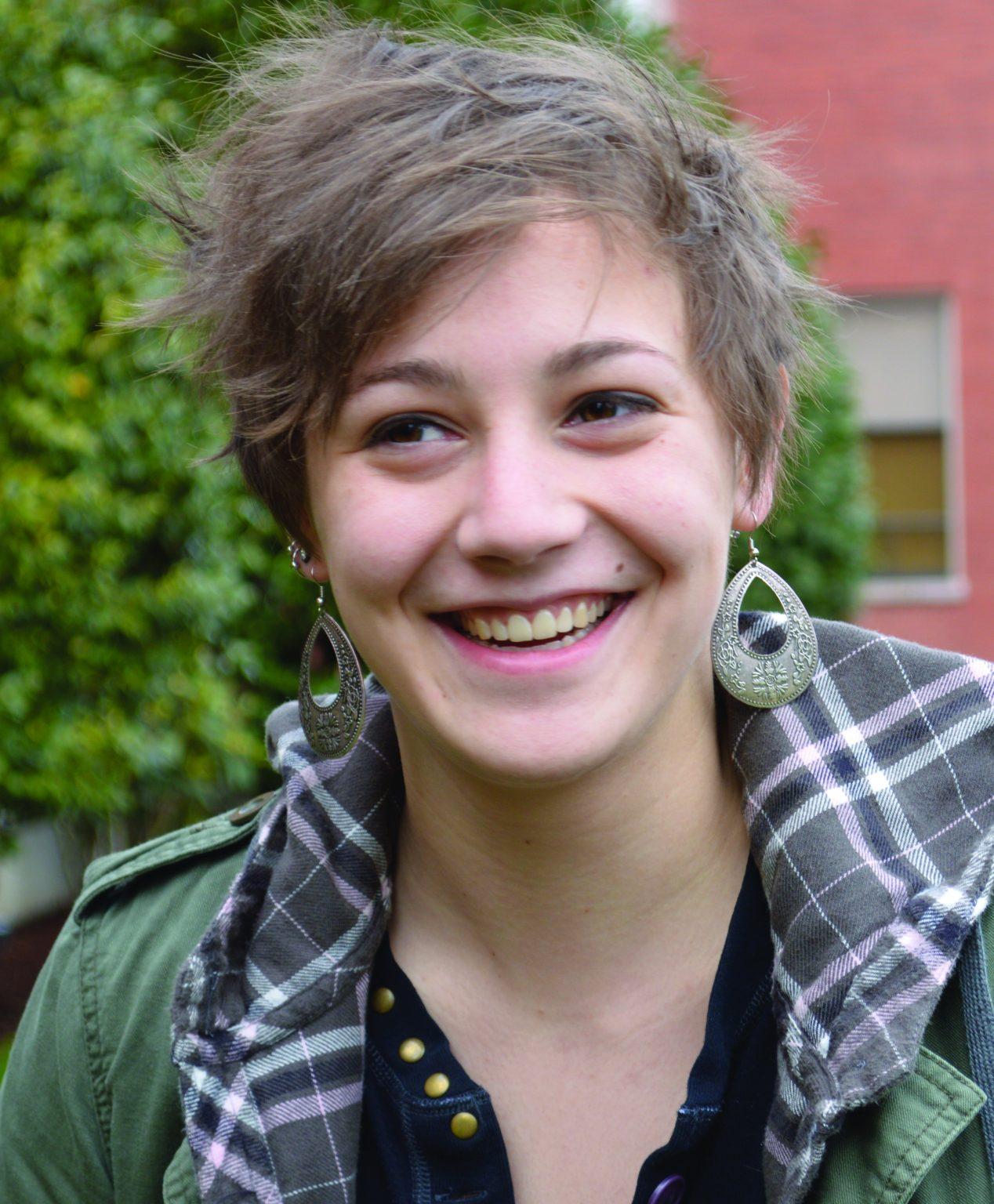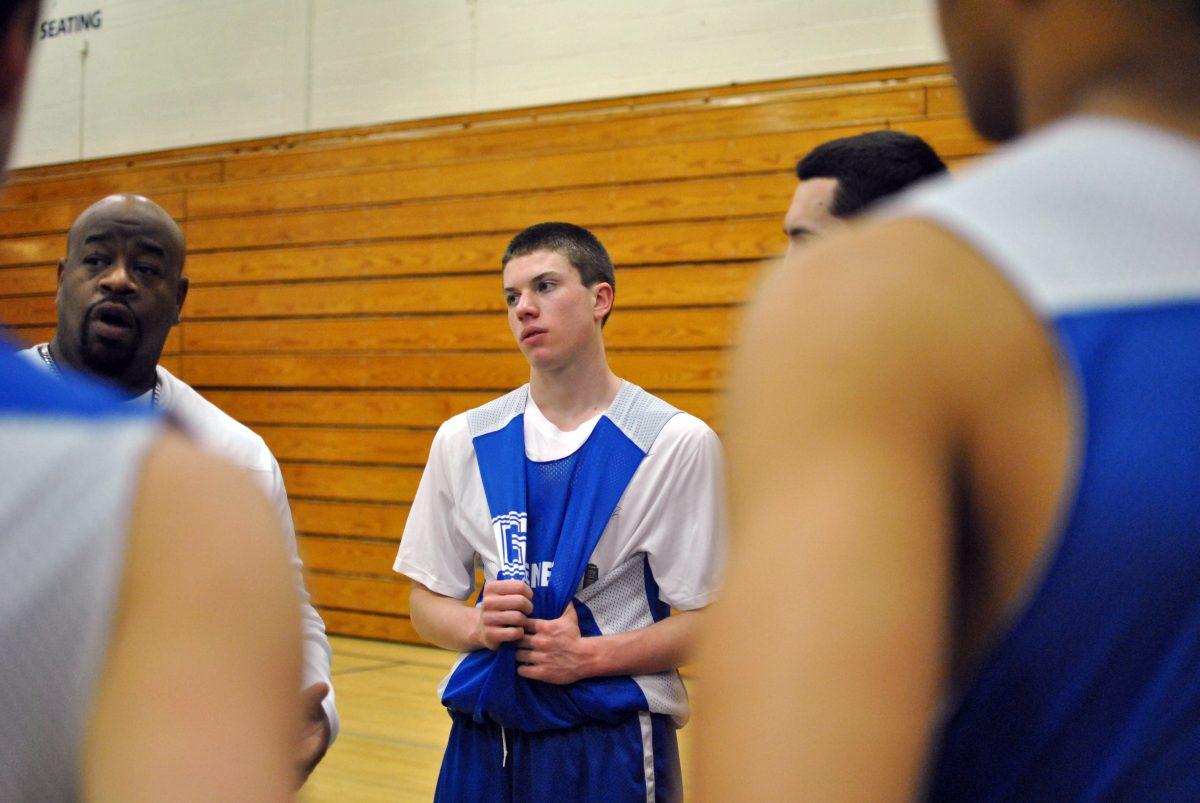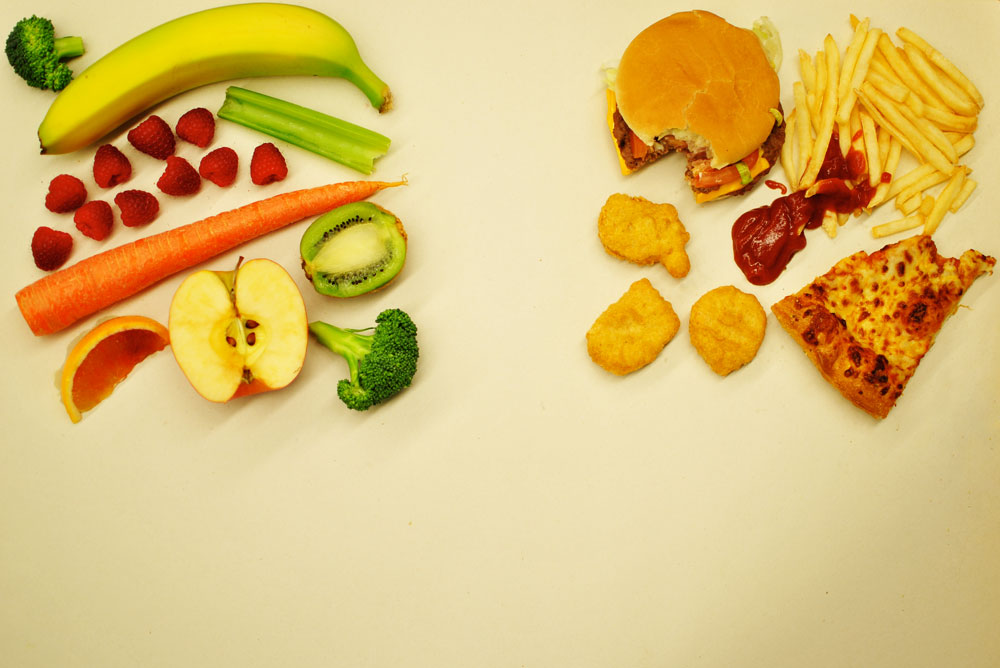It’s a recent Friday night and dozens of teenagers pack into a house in the Grant neighborhood. Music blares over the sea of kids dancing shoulder to shoulder, drinks in hand. In the corner, a group of boys “shotgun” beers, spraying foam all over the carpet. The floor is covered with spilled drinks, dirt trekked in from outside and marijuana ashes.
At another house the following weekend, countertops in the kitchen are strewn with bottles and crushed cans as a small group of friends gathers. An empty bottle of Goldschläger rests on its side, residue of gold flakes at the bottom.
People are clustered on couches and chairs, drinking cheap beer. Music fills the stale air, drowning out the sound of a girl dry heaving over the toilet after drinking too much. Upstairs in the bedroom, the host’s most trusted friends are breaking down marijuana and rolling it in paper. Smoke begins to fill the room, thick and heavy.
For Grant High School students and other teens, gatherings like these are common. And more often than not, the reasons for attending go beyond socializing. Drugs come easy and alcohol is abundant. In a lot of cases it seems the most important thing is how much people can drink in one night. It’s hard to see beyond the next two hours. The attitude is: I’m young, I’m free and this won’t catch up with me.
But the reality is drug and alcohol use can cause problems that catch up. Alcohol is as close as the nearest liquor cabinet. Once students turn 18, it is easy to obtain a medical marijuana card. With the number of medical marijuana outlets on nearby Sandy Boulevard and the recent legalization of marijuana in Washington State, some worry things could get worse.
“It’s a critical concern if kids are coming to school under the influence. Our district has a really tough stance on that and we’ll deal with it when those kids are caught,” says Curtis Wilson, Grant’s vice principal in charge of discipline.
In the 2011-2012 school year, 29 students were caught with drugs or alcohol at Grant. Hiding out behind the infamous “crack shack” in the park or on the Alameda Ridge stairs, kids huddle together and load a pipe, returning to class high and disengaged.
Even the school dances have problems. At Winter Formal this January, six seniors were caught smoking weed in a car in the parking lot and many parents complained of students who were intoxicated at the dance. As a result, the Spring Fling dance is canceled, and prom this year will be closely monitored for any other problems.
“We know we have some kids that are coming here to do other things besides just dance and have a good time. There’s kids getting involved in drugs or alcohol,” Wilson says. “We’re dealing with kids that are doing stuff in the bathroom, and dealing with stuff happening on the dance floor.”
Senior Madeline Pape says, “I think it’s an issue among a lot of people, but not everyone is involved with it.” But, she adds, when those involved take it too far, “everyone else has to suffer for it.”
Experimenting seems harmless enough. But for some, a one-time thing can become a common occurrence and ultimately control everything. Going down the path of substance abuse might mean never making it back.
David Hidalgo, the director of Multnomah County’s Mental Health and Addiction Services Division, explains the difference between trying something once or twice and becoming addicted. The addiction line gets crossed when “you’re starting to have problems and you still want to use. You need help,” Hidalgo says.
Hidalgo’s job is to ensure that there are services available to those who need help with mental health and addiction in the community. His division contracts out services and provides some directly such as mental health programs through school-based health centers. “Prevention and early intervention is key,” he says.
At Grant, the school-based health clinic is available to students struggling with mental health and addictions issues. Heather Washburn, a mental health therapist, meets with students who have been referred to her. “I help connect students to treatment services in the community,” Washburn says. These can be in the form of outpatient programs, therapists and treatment centers.
For teenagers, Hidalgo says key risk factors for substance abuse and addiction are early use of drugs and alcohol, mental health conditions, peer influence, and family history of addiction.
“We know now through science and technology that our brain develops into our early 20s, and so the things that you do as you’re growing up impact how your brain develops,” he says.
Devarshi Bajpai, the addiction services manager at the county, has been working in the addictions field for 18 years and knows from personal experience how addictive drugs and alcohol can be. He’s been clean and sober for 18 years.
He remembers when he was 17 and a junior in high school, he was almost expelled because of his continual use of marijuana and inhalants. At that age, he says, “I knew something was wrong in my life, most people weren’t as miserable as I was.”
He was sent to a residential program for three months where he cleaned up. That’s when he decided he wanted to be an alcohol and drug counselor. Now he helps teens who are going through struggles similar to his own.
“It wasn’t until I was forced into treatment by my parents and the school that I figured out the drugs and alcohol were what was making my life miserable,” Bajpai says. “That was the turning point.”
For some Grant students, drugs and alcohol can cause a downward spiral. Take the case of sophomore Sam Panter. It was June, the last day of his freshman year. He sat in the middle of the classroom during a final exam in math. Suddenly, his face began to sweat and he rested his head on the desk.
 Around him, Panter heard his classmates say he had passed out. He tried to reply and say that he was OK, but couldn’t make his mouth form the words, unable to move or speak. Security guards were called and helped him as he staggered out of the classroom. A Gatorade bottle was retrieved from under his desk. It was filled with codeine, a powerful pain-relieving opiate.Panter says he started using substances to mask his depression. He says he always felt emptiness in his life coming from being adopted and not knowing his real parents. Unsure how to cope, he turned to drugs so he wouldn’t have to face his problems head on.Things started to go downhill for Panter when drugs began to affect his home life. During Panter’s lowest point, when he was high almost every day, his relationship with his parents was rocky at best. Choosing not to confide in them, he isolated himself in his bedroom all the time.
Around him, Panter heard his classmates say he had passed out. He tried to reply and say that he was OK, but couldn’t make his mouth form the words, unable to move or speak. Security guards were called and helped him as he staggered out of the classroom. A Gatorade bottle was retrieved from under his desk. It was filled with codeine, a powerful pain-relieving opiate.Panter says he started using substances to mask his depression. He says he always felt emptiness in his life coming from being adopted and not knowing his real parents. Unsure how to cope, he turned to drugs so he wouldn’t have to face his problems head on.Things started to go downhill for Panter when drugs began to affect his home life. During Panter’s lowest point, when he was high almost every day, his relationship with his parents was rocky at best. Choosing not to confide in them, he isolated himself in his bedroom all the time.
To help him get through, Panter’s mom, Susan Zimmerman, tried to talk and be open with her son. She said she tried to “surround Sam with adult mentors that he could talk to when he had a hard time talking with us.”
The codeine incident wasn’t his first time getting caught at Grant for using. Panter’s first offense was the beginning of his freshman year. All he remembers is being in class one minute and waking up in the emergency room the next. He had overdosed on some hash that turned out to be laced with another substance.
In Portland Public Schools, this was considered a Level A violation. He was required to attend an Insight Class, a six-and-a-half-hour session that taught him about brain development, and risks of drug dependence. The class advocates healthy life choices and stress management techniques.
After attending the class, a student can continue with high school normally. “They’re normal kids but they’re on probation for the rest of their high school career. So if anything like this happens again, they go to a Level B,” explains Wilson.
Panter hit Level B as a sophomore last October when he was found with a loaded marijuana pipe in his backpack. Sitting in class with his friends, his teacher smelled weed and called security. Wilson arrived, searched him and said that he would be expelled. “It was just another choice that I regret,” Panter remembers.
A week after the incident, he attended a Restorative Justice hearing where it was decided he would be in a Delayed Expulsion School Counseling Center program referred to as DESCC.
“DESCC allows us to get the kid out of school for three weeks, and they get help and counseling and they deal with their issues,” says Wilson.
After three weeks, the student and administration have an intake meeting where it’s decided if the student can come back to school. This is the last step in preventing someone from becoming expelled. Panter went to DESCC every day, attending classes in anger management, conflict resolution, and drug and alcohol refusal. He says he felt like the “odd kid out,” saying DESCC seemed to be geared towards “more aggressive people, and I wasn’t there for violence or drug trafficking.”
Once he completed the program, Panter reentered Grant. He remained under watch and had to submit to random drug tests until the end of the calendar year.
Hidalgo says stories like Panter’s are all too common. Situations arise where people begin using and they can’t stop. “If you feel depressed and hopeless, using substances is a way to go in and help with that stress and kind of cope with that stress,” Hidalgo says.
 For Joseph Cummings, a Grant graduate from the class of 2010, drugs and alcohol became the focus of his high school life.
For Joseph Cummings, a Grant graduate from the class of 2010, drugs and alcohol became the focus of his high school life.
He remembers stumbling into his house late one night after riding his bike home drunk and high. His parents had staged an intervention after finding a pipe in his bedroom. Cummings yelled at his mother and in a fit of rage she slapped him across the face.
“My family didn’t know that about 15 minutes before, my face was almost crushed by the tire of a car on 41st and Alameda,” Cummings recalls. “The last thing I saw on that street was the rubber engravings on the tire moving right past my eyes and I remember thinking: ‘Do it. Kill me right now.’”
He had hit rock bottom and ran away from home that night.
Cummings started drinking and smoking weed as an eighth grader. By the time he entered high school, his use went into full swing. He remembers going to parties and feeling that the people who brought alcohol and drugs were the coolest. “It was my dream to be that person. I wanted acceptance, acknowledgement and recognition,” he says now.
By sophomore year, drugs got him through every day. He wouldn’t drink during the week but he would binge on weekends.
Trisha Todd is Cummings’ former theater teacher. She met him when he was a freshman in theater class, remembering him as an “exceptionally talented” boy who stood out for his ability to carry the stage. She watched, though, as his popularity and reputation in the school flourished and his attention to acting took a back seat.
“He was very charming and always the life of the party. But the downside was his popularity came from partying,” Todd recalls.
By sophomore year, Cummings was skipping class. When he did show up, he often wouldn’t have his lines memorized or wouldn’t treat class seriously. It wasn’t until a rumor spread during his junior year about him performing high in the One Acts that Todd confronted him. “I felt like he had let me down,” she recalls.
“You’re too good for this,” she told him. “This is going to catch up with you.”
Cummings chose to disregard her concern, shying away from help. It was after the theater incident that Cummings’ parents decided it was time to step in. “Theater was so important to him. Up until then it didn’t seem to be affecting school too much but once it impacted something he loved, we decided to get him help,” says his mother, Linda Cummings. They set him up with a private drug and alcohol counselor who tested him regularly.
Annie Oldani, who was a year ahead of Cummings at Grant, had struggles with cocaine and alcohol. She began driving him to Alcoholics Anonymous meetings. Supportive of her friend, Oldani recalls: “I would drive him, drop him off, drive around and pick him up after.”
She refused to attend the meetings herself or admit that she had an addiction even with Cummings’ gentle encouragement.
Cummings spent that summer trying to stay sober. He entered his senior year shunned by most of his former friends. “People ostracized him,” Todd remembers.
For Oldani, things only got worse. After graduation, she says, “I was messed up all the time.” With no one to monitor her, her cocaine addiction took over. Things turned around for her on one nearly fatal night.
A few weeks after graduation, Oldani drove by herself to the beach after spending all her money on a lethal amount of cocaine. The night was cold and she hadn’t thought to bring warm clothes so she built a bonfire. “I just wanted to smoke my brains out and not wake up,” she remembers thinking.
She blacked out around 2 a.m. and woke up at 6 p.m. the next evening, sprawled on the gravel next to her parked car. That night, Oldani called someone who helped her find a residential treatment center and she began the intake process immediately. “That time happened really fast, but that’s how it should have been,” she says now. “I didn’t have a chance to talk myself out of it.”
She began her path to recovery, setting short-term goals for herself. “Today, I’m not going to do anything stupid,” she would say. “As you begin to get better, you realize how far you were gone.”
In order to recover from drug or alcohol addiction, the biggest danger is not talking about it. Hidalgo stresses: “Treatment is available and treatment works.”
It’s hard to get past the stigma of being the troubled kid, but a problem cannot be helped until it is recognized. Bajpai speaks from experience: “There is a large and thriving community of recovering alcoholics and drug addicts who are young throughout the city. There are resources out there.”
Zimmerman, Panter’s mom, has seen a change in her son in the time after he completed the DESCC program. She says: “Sam took it seriously and seems to have come out of that experience a little more aware of consequences and where he is, what he needs to do.”
Since returning to Grant, Panter has worked to remain sober and focuses his attention on schoolwork. He says being sober in class has been difficult because “it’s harder to concentrate, and things just don’t seem interesting, but it also lets you really buckle down and get work done.” Rather than spending lunch getting high, he now uses the time to catch up on schoolwork.
Cummings, now a junior at Cornish College of the Arts in Seattle, is surrounded by an artistic community of supporters. He performs in plays, does music on the side, and recently got a role in a film about drug and alcohol addiction. His role? A punk kid.
 After getting out of treatment, Oldani began taking classes at Portland State University and is now in a program at Mt. Hood Community College that will give her a Youth Workers Certificate. In November, she got a job at Janus Youth Programs working with children with addictions, most of whom are homeless.
After getting out of treatment, Oldani began taking classes at Portland State University and is now in a program at Mt. Hood Community College that will give her a Youth Workers Certificate. In November, she got a job at Janus Youth Programs working with children with addictions, most of whom are homeless.
It’s difficult to realize the impact that high school decisions will have on the rest of your life. It’s even harder to admit when something is becoming a serious problem. Even though there’s a level of drug and alcohol use that could be considered recreational, “most kids are above that line,” Oldani says. “They’ve redefined normal.” But she wonders of Grant students: “Do you really want to gamble with that?”
Grant Magazine staffer Nicole Goodman contributed to this report.



































